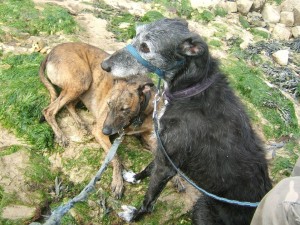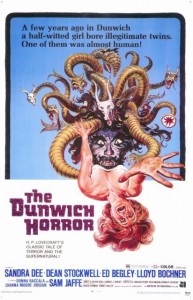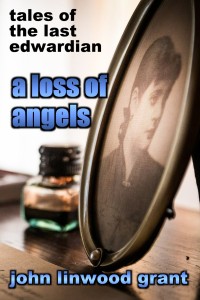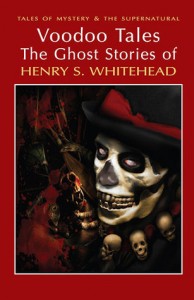Hey, are you an avid fan of zombie films and TV series? Do you love World War Z, and find yourself glued to The Walking Dead, or anything by George Romero?
I can’t say I do.
In fact, I could probably cope without ever tripping over another zombie for the rest of my life, in any medium you care to mention. Including my life, which is probably classed as a large rather than a medium, given my love of Pateley Bridge pork pies.
(I make one exception – the film Cockneys vs Zombies – because it features the slowest chase scene ever, where a stumbling zombie chases a pensioner with a zimmer frame. That bit is fun, believe me.)
So this entry isn’t about zombies.
It starts there, because of the way my mind works. The other day I finally remembered the title of the first zombie film I saw, White Zombie (1932), starring Bela Lugosi. I didn’t actually see it in 1932, before you ask.
My interest was aroused when I found out that it was based on The Magic Island, by William Seabrook (1884-1945). Seabrook was interested in voudou, and travelled extensively. More interesting to me was that he claimed to have tasted human flesh. Accounts vary. He originally said that he was given human flesh in West Africa, and then that he had to obtain a body from a French morgue. He described it thus:
It was mild, good meat with no other sharply defined or highly characteristic taste such as for instance, goat, high game, and pork have. Jungle Ways
I read this, and thought a lot about mild, good meat. I was brought up in the Church of the Confirmed Carnivore, you see. It was a bit like the Plymouth Brethren, but you could fancy other men if no-one was looking.
My father was a firearms dealer. We didn’t eat any of the neighbours in our tiny village, sadly. Instead, he taught me to hunt. He also taught me how to cast my own bullets and load cartridges, and we went out on the wolds to shoot rabbit and pigeon (mostly).
Out there, in the winds off the North Sea, we scanned the gorse bushes and let loose the wonky, unevenly-powered bullets from Hell. I’m not sure I was very good at the ammunition bit. And we carried home flesh for mother, who usually forced a smile.
The rabbits were paunched in the field, leaving the innards on the grass for other hunters. The pigeons were de-cropped and plucked on the kitchen floor. As the sink was sometimes filled with live crabs, this was a messy business with little hand washing.
I don’t have a gun any more, but when we took on our latest lurchers, we found out that the female had once been used for hunting. Given the hillsides full of rabbits near us, we considered the matter. Were we going to let Chilli hunt, and catch us some free dinners? A Household Meeting (me rattling on while my partner read a book and mumbled uh-huh now and then) came up with three key issues:
– If we started her back on hunting, would that make her even more likely to chase and eat the neighbourhood cats?
– How many farmers did we know who would let us do it (none)?
– What were we going to do with all the hares/rabbits, given that I was the only one who would touch them with a Polish bargee?
I have a family which considers chicken breasts to be a pretty bloody affair, and likes to live off long-dead pasta and humanely-killed salad vegetables.
Well-trained lurchers or longdogs know what to do. They have to. They hunt and take down the species(s) you train them on. You do have to proof them against going after anything that moves, but they can be taught to wander through a flock of sheep, ignore chickens and so forth. So it might be possible to train, or re-train, Chilli to focus on rabbits alone (and perhaps cats with very long ears). I can’t speak on the squirrel issue – every lurcher we’ve had has gone into a frenzy over squirrels, regardless of what we’ve told them.
 Django and Chilli enraged with bloodlust
Django and Chilli enraged with bloodlust
Was it worth it? Even if we dealt with the first two issues, I would still be left living alone in the garage with lots of rabbit corpses. In the end we decided against the hunting, although Chilli didn’t get a vote. Perhaps that will teach her not to interfere in Labour Party leadership elections.
And today we were up at Pateley Bridge, and I had to walk the poor dog past half a dozen fenced fields full of lively bunnies. It was the Torment of Tantalus, rabbits offered but always out of reach. I was thinking, Mmm, pies; Chilli was thinking, Why wait for pies? My partner, who is a kindly soul when kept off the coffee, was thinking, Oh, they’re cute.
So my only recourse is to write to the Tory Party and ask if they want Chilli and me to hunt down some of these immigrants that are worrying them. Presumably not those who are building our houses, keeping our hospitals running and staffing our care homes. And not the ones who are half-drowned from crossing the Mediterranean.
It’s a complex issue, and I want to know – is it OK to hunt down totally unskilled, clueless immigrants with lurchers, paunch them in the car park and take them home for supper? Would William Seabrook have approved, and would they make good pork pies?
Politics, eh? Give me longdogs any time.


